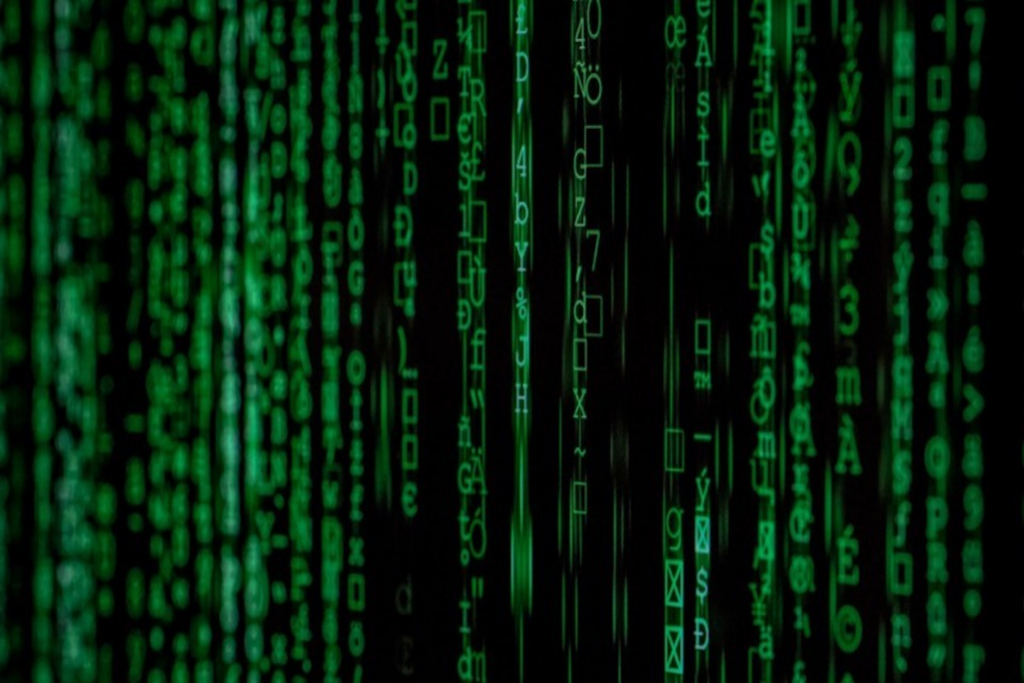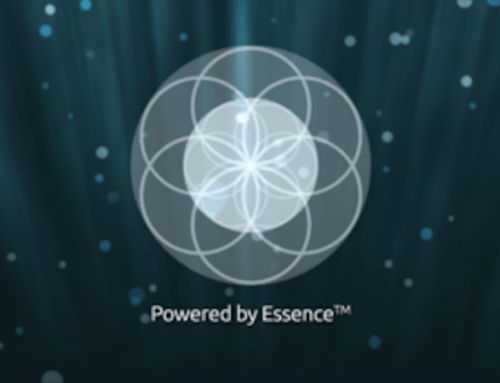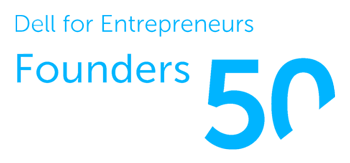A Journey into the Unknown – The Essence® of Computing
Founded in 2011, MindAptiv has a vision to enable the world to “create at the speed of thought®.” To achieve this outcome, the foundations of computing–creating software in particular–must be changed so there is a bridging of the gap between human intentions and machine behaviors. Essence leverages our patented approach of generating automatically tuning, syncing, scaling, and highly-parallelizedmachine instructions, on-the-fly. This approach allows us to bridge the gap between human intentions and machine behaviors without writing code. We predict that everything in computing is about to change.
This blog post is meant to begin the conversation about the Essence®Project, and products created using a new class of revolutionary software development tools, emulators, operating systems, web browsers, apps/aptivs, and more.
Additional blog posts will cover multiple technological breakthroughs that were produced during the project.
The remainder of this post emphasizes the importance of new tools for creating machine behaviors without writing code. Before going further into specifics about the tools, I’ll explain why we created them and why it has taken 10 years to build them.
Opaqueness is the Biggest Problem in Computing
In 2019, there were nearly 7.5 billion people in the world and only ~18 million programmers writing code. We’ve all heard it before, just teach more people–including kids–to code. Given the obvious imbalance between coders and non-coders, the question is why should more people be required to learn how to code to produce machine behaviors, when they already know how to express what they want machines to do using natural languages? In a future post, we will discuss how the barrier that programming languages presents is a global diversity problem on multiple levels. Given the value of writing code is to produce desired machine behaviors–based on ideas–the opaqueness of programming languages is for many an impediment to achieving that outcome.
Imagine all of the ideas that are trapped. To set ideas free, humanity needs tools that make it easy to understand the essence of things [the inputs, outputs and their behaviors] within a computing environment.
“Essence is the attribute or set of attributes that makes an object or substance what it fundamentally is, and which it has by necessity, and without which it loses its identity.”
Plato – 424/423 BC – 348/347 BC
The great Greek philosopher, Plato, made an observation that gives us insight into a better way to think about computing. As tools, programming languages are abstractions from both human intentions and machine behaviors. In other words, there is a gap that exists between what the majority of humans want to happen and what machines do. Our team believes that there is a fundamental need to bridge that gap, so we created Essence Meaning Coordinates.
Mapping the DNA of Computing
Meaning Coordinates is a meaning representation system (a way of establishing meaning) and implementing a method that acts upon it for computing, in real-time. The power of Meaning Coordinates lies in its ability to map out a computing environment in the form of its hardware assets, services, users, data and their possible behaviors. Meaning Coordinates carries instructions in and between computing devices. Expressions of meaning and significance are built using Meaning Coordinates’ base set of semantic units, which distill nearly any way to express an idea down into its most atomic pieces.
Here’s a sample Meaning Coordinates Snippet:
JoSmxTryChoHa
The above snippet translates into: ‘Given a collection of events, locate the desired event within the collection and extract its contents. Then, create a new cloned event from the extracted data’.
Change the sequence of the two and three character elements and the meaning of the snippet changes as well as the resultant behaviors the machine will perform to accomplish what that snippet is expressing. That’s why we compare it to DNA sequencing, simple changes in the ordering of the nucleobases in DNA can cause drastic changes in an organism’s biology, and the same is true for reordering Meaning Coordinates.
No Need to Learn Meaning Coordinates to Use Them
The atomic nature of Meaning Coordinates supports re-expressing meaning in any language. This includes; regional variants like British or Appalachian English; completely unrelated languages like Japanese; or even fictional or hypothetical tongues like Elvish, Klingon, or a language communicated by visitors from another galaxy.
- Meaning Coordinates are remapped to any of the potential translations, including individualized slang and interpretation of ideas.
- Meaning Coordinates are re-expressed to match an individual or group’s style of expressing ideas, in real-time.
Highly compressed and permuted text representing Meaning Coordinates takes up little space. Granular differences are not duplicated, but use a highly efficient hashing approach.
We currently use Meaning Coordinates to create next generation tools, like Maven® (a dynamic app creator) and Synergy® (a natural language dialog system). We created illumin8®with Maven and will soon use it and Synergy almost exclusively. The goal, in all cases, is to reduce the need to write code to create apps (AKA Aptivs) and on-demand machine behaviors.
The Legacy of Computing
It would be wrong to interpret our vision as a disparagement of the legacy of computing. There is no question that computer technology has significantly impacted the world. There is hardly an industry today that is not touched by it. What is not arguable is that there are major areas in computing that have room for improvement.
We believe that someone has to address what is clearly foundation level flaws in computing. How could that not be a correct assessment when so many companies and organizations big and small are getting hacked, and there is such a high rate of system failures? Complexity of creating and maintaining software are big problems [globally] and the Essence Project is about challenging the current paradigms that perpetuate the problem. No more doing the same things and expecting different outcomes.
Love the outcomes…not the tools
The best tools enable as many people as possible to realize the desired outcomes, at faster speeds and lower cost. History is full of examples of this (e.g. horse and buggy vs. the automobile). Humans are tool makers. It’s how we solve problems. There will always be better tools. In the end, the best tools have a tendency to win. In this case [finding better tools for computing], current generation tools for writing code, applications and the operating systems that manage the computing environment are incompatible with our vision.
For those who think that programming is essential to the existence of software engineers, they are wrong. Programming languages are tools that software engineers use to solve problems. Give them better tools [not necessarily requiring them to code] and they become better problem solvers.
Despite the common occurrence of software reaching levels of complexity that are too difficult for humans to comprehend, the process of creating software is largely the same as it’s been since the 1960’s. As described in an article published in the Atlantic (here), there is a coming software apocalypse. In the article, Brett Victor, a highly respected interface designer, computer scientist and electrical engineer, was quoted as saying “I’m not sure that programming has to exist at all”. At MindAptiv, we agree with this thinking. Challenging the status quo is what led to every paradigm shift that has ever happened. We are on a mission to empower all of humanity by making it largely unnecessary to write code in order to produce machine behaviors.
Down Roads Less Traveled
This journey is very much about discovering the technological secrets to unlocking ideas. Ideas are the engines that drive innovation and are the basis for creating tools that enable humanity to change the world. We are convinced that in order for humanity to realize the benefits from greater global diversity in the tech world, software has to become something else [no longer fixed decisions made by coders]. Software has to become wantware (human intentions translated into machine behaviors in real time). Successfully achieving that outcome would most certainly change the world, but not without big challenges along the way (see the key events on the Road to Essence below).
illumin8 Media – A Relaunch of a Revolutionary Solution
We believe that the relaunch of our illumin8 product as illumin8 Media marks the beginning of a new era in computing as predicted here by a top futurist in 2014. The primary purpose of illumin8 is to transform live video with new augmented reality, stylizing and adaptive quality features. The fact that illumin8 delivers its features by generating machine instructions in real time, and largely in parallel [a much larger than normal amount of tasks/algorithms executed at the same time] is a revolutionary breakthrough in computing. It means much more can be done with less hardware, data, and faster than before.
As disclosed in the published patent (more are pending and new applications will soon be submitted), Essence and apps made using tools based upon it, takes a new approach to the way humans interact with machines. Using Maven, the illumin8 app was created–blank screen to working app–in about 2 hours. That will soon be reduced to about 20 minutes. Almost all of the exceptionally parallelized runtime Machine code for the app is being generated, not from code libraries, in real-time, used and then deleted.
Why Delete Generated Machine Code?
Essence, present in every Aptiv (adaptive apps), seeks to generate the optimal machine instructions every time it runs. It’s like having a personal team of coders working 24/7 to deliver the best code for everything the app does. This is a fundamentally new approach to computing and method of producing user experiences. As a result, the cost of coding is dramatically reduced to the point that humanity–as a whole–benefits from greater access to the tools of the digital marketplace. The implications are quite staggering.
Some will be tempted to call this technology AI. There is an alternative term that better describes what Essence technology is designed to do. That term is Semiotic Intelligence (SI). While AI focuses on teaching machines how to independently perform tasks that are intuitive to humans, SI augments the creative potential and broad problem-solving skills of humans. Users often know what they want but the challenge is getting machines to do it.
What is the value of computing? Is it the software, or is it the machine behaviors?
At MindAptiv, we believe that the answer to the above question is most certainly the latter. If the machine behaviors that meets user needs can be produced without writing code, the solutions to problems become far easier and faster to produce.
To achieve desired computational outcomes that are aligned with the user’s intentions [without waiting for someone to write code], Essence applies the principles of Computational Semiotics in a new patented approach.
More About Semiotics
Here is a clear explanation of how semiotics exists all around us:
“Semiotics is the study of signs and symbols, in particular as they communicate things spoken and unspoken. Common examples of semiotics include traffic signs, emojis and emoticons used in electronic communication, and logos and brands used by international companies to sell us things—”brand loyalty,” they call it.
But signs are around us all the time: consider a set of paired faucets in a bathroom or kitchen. In your kitchen, the left side is almost certainly the hot water tap, the right is the cold. Twenty years ago or so, taps even had letters designating the temperature of the water—in English, H for hot and C for cold. But in Spanish it was C for hot (caliente) and F for cold (frio). Modern taps have no letter designations at all or are included in one tap—but even with one tap, the semiotic content of faucets is still tilt or turn left for hot water, and right for cold. The information about how to avoid being burned is a sign: you know which direction to tilt.”
Read more of the article by Richard Nordquist on this topic.
Essence translates all inputs (e.g. video, audio, text, natural and programming languages, etc.) into symbolic representations in real time. The many advantages of this approach stem from the ability to generate machine instructions that map directly to the translated inputs. Instead of waiting for programmers to write code in a specific language (which takes time and is inherently deterministic), Essence bypasses that step by deriving meanings [what the user or system designer wants to happen], then translating them into machine instructions in real time. At MindAptiv, we like to refer to this as software becoming wantware.
What is Computational Semiotics?
“Computational semiotics is an interdisciplinary field that applies, conducts, and draws on research in logic, mathematics, the theory and practice of computation, formal and natural language studies, the cognitive sciences generally, and semiotics proper. A common theme of this work is the adoption of a sign-theoretic perspective on issues of artificial intelligence and knowledge representation. In semiotics, a sign is anything that communicates a meaning that is not the sign itself to the interpreter of the sign.”
Source: Wikipedia
In Conclusion:
We have discovered an enormous mine of possibilities. We have dedicated years to creating radically new tools for excavating–metaphorically speaking–and making new products. Unlike a physical mine containing specific minerals, Essence enables us to create the digital minerals and the tools for crafting the apps that we want. The possibilities are endless.
Follow us on this blog, social media, and our website as we expose potentially world-changing solutions. More about Essence and solutions created using it in future posts.
Get ready to ‘create at the speed of thought®’
Ken Granville & Jake Kolb
Cofounders of MindAptiv
Updates:
- 03/31/24 – The events that represent the past and current development of Essence has been updated.
- 03/31/24 – Added reference to illumin8 Media as the relaunch of our illumin8 product.










Leave A Comment